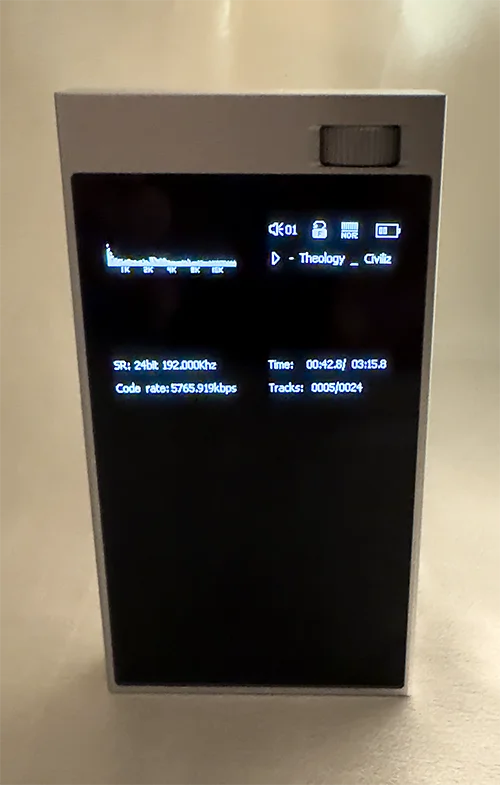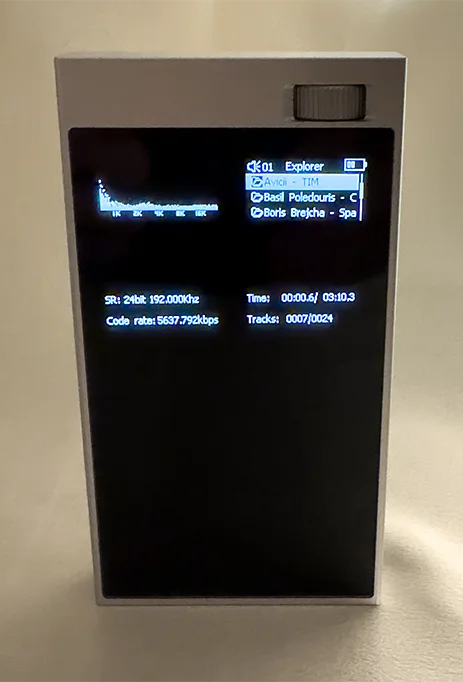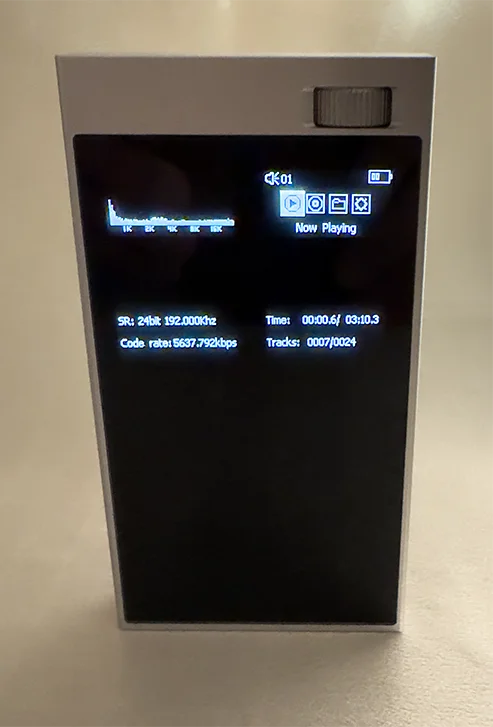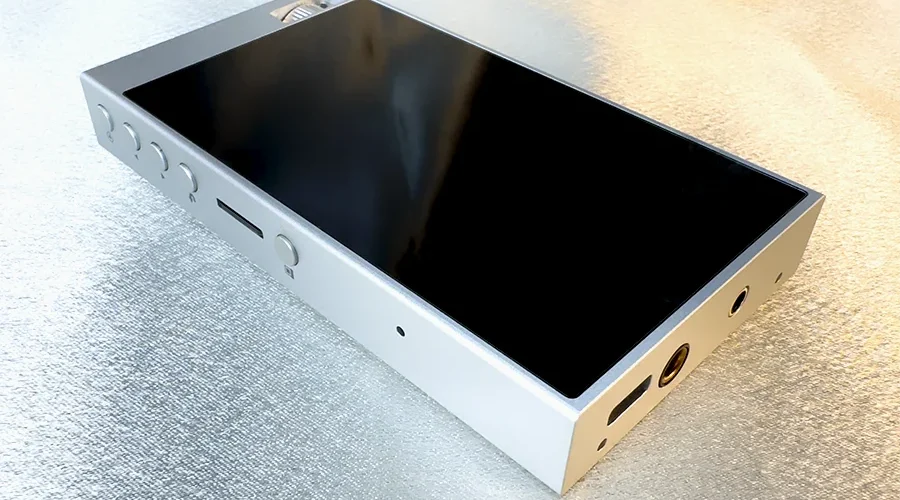Interface & Usability

If I told you USD $549 is all you need to spend on a DAP that sounds superb & weighs just 157 grams, you’d probably ask “what’s the catch?”
The catch is this is a simple device with a bare bones approach to prioritise sound quality – there’s no Android here which means no streaming, nor is there a fancy touchscreen. Instead the interface is extremely utilitarian & spartan, and is controlled through the player’s side buttons & volume wheel.
To minimise battery consumption the display uses four tiny OLED screens – top left is a spectrum analyser, below that shows the current bitrate, bottom right is the time position in the current track & total number of tracks, and top right is the main display where you control the player.

The control window in the upper right is small & can only fit a limited amount of information, which makes scrolling through lists of albums & tracks less enjoyable because only 3 can be visible at a time.
The narrow width of the window also means only some of each album or track name is visible – they do automatically scroll horizontally to display the full name, but it’s a compromise. The control window also displays volume level & battery life (represented by 1-4 bars) at all times.
FWD & BCK buttons or the volume wheel are used to scroll, while PLAY button makes selections and the BACK button does what it says. Another downside is Clear’s modest CPU runs at 400MHz so although scrolling through albums & tracks is very fluid, loading a song after you hit play can take several seconds.
By stark contrast omitting Android’s bloat means Clear boots up in a mere three seconds, whereas Android DAPs can take up to a minute or more. The player’s fifth button turns the screen on or off, which feels redundant given it turns off automatically if no buttons are pressed for awhile, and back on the moment any of other buttons are tapped. Pity that button isn’t programmable.
For such a simple player there’s a few goodies in the Settings menu – a Line Out option (sadly it only seems to apply to the 3.5mm jack), four built-in DAC filters which I personally can’t hear any difference between, adjustable screen brightness and auto screen-off & power-off durations, even the ability to format the inserted Micro-SD card.

Another quirk is playback won’t automatically pause when the earphone plug is removed, which makes A/Bing interesting but otherwise hasn’t affected me. Lastly, gapless playback is not supported as there is a short pause between tracks.
It’s a fairly fluid system once you overcome the initial learning curve, and given the player’s weight & dimensions is one I’m willing to excuse in no small part thanks to how terrific Clear sounds. Having said all that, being able operating the player with just one hand is a refreshing change from larger, heavier DAPs where two can be required just to hold them without spraining a wrist.
Page 1 – Introduction, Tech Specs & Battery Life & Ergonomics
Page 2 – Interface & Usability
Page 3 – Sound Performance & Technical Performance
Page 4 – Source Comparisons
Page 5 – Conclusion


Comments